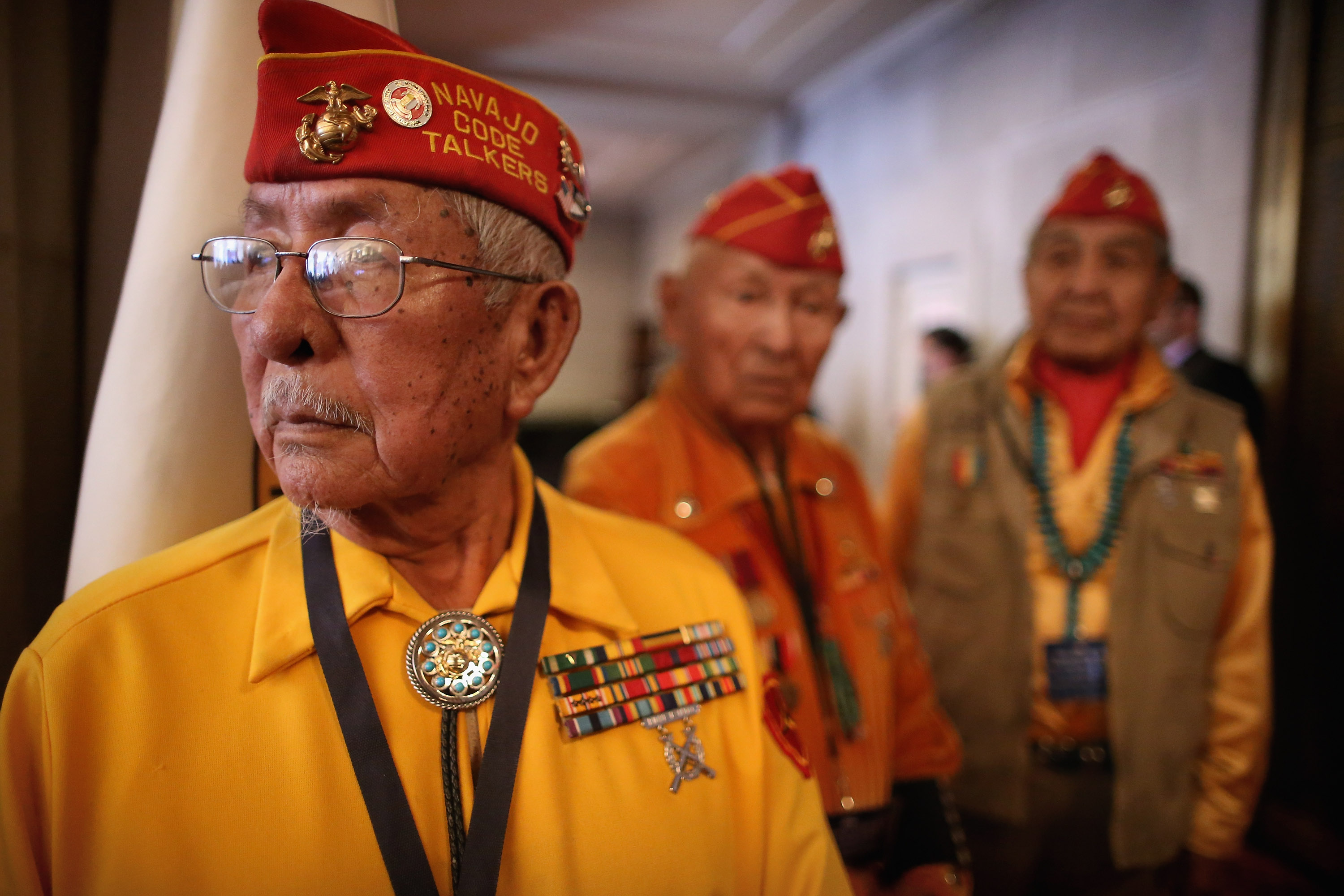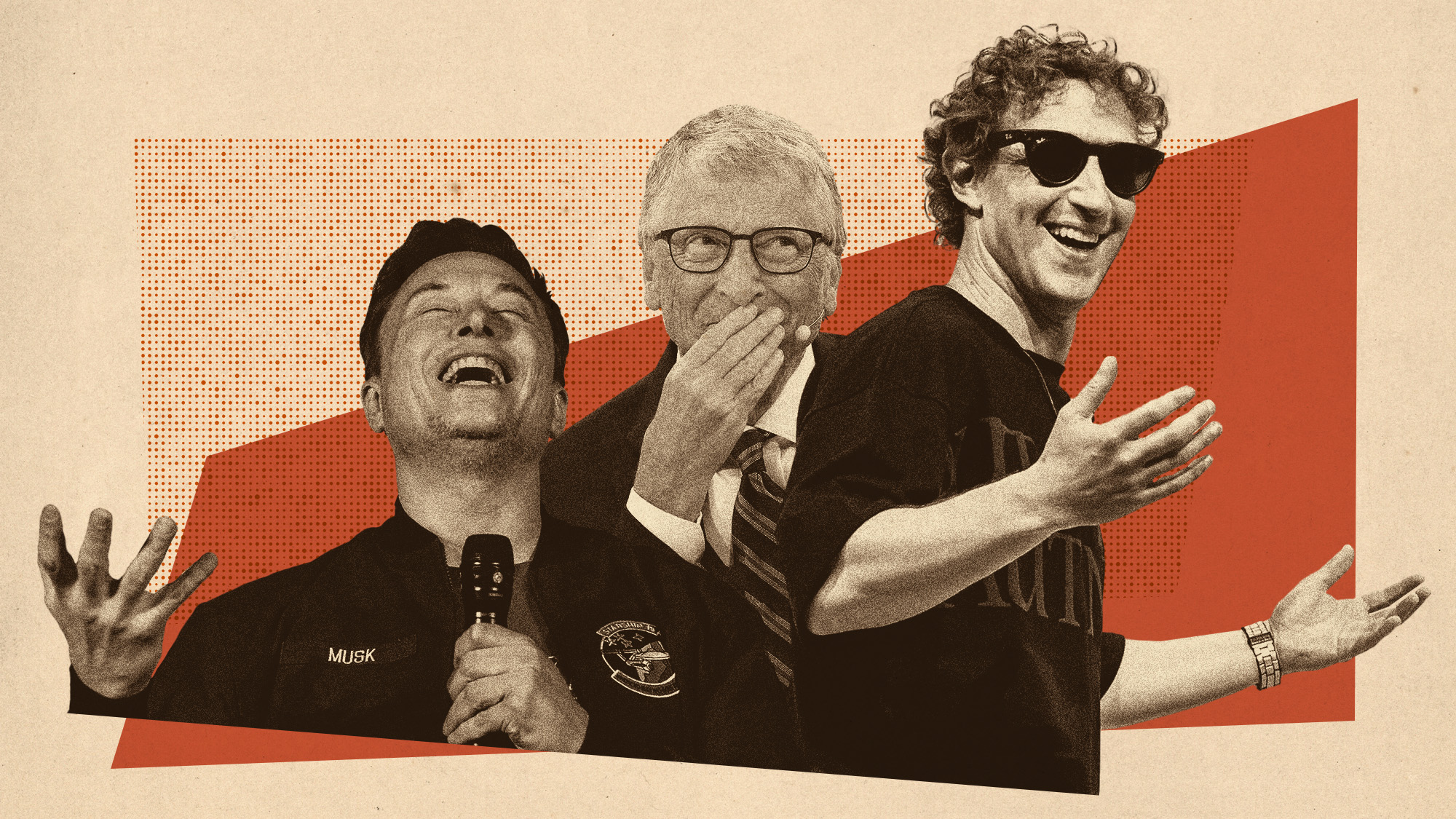The future of America's endangered languages
Almost 90 percent of Native American languages could go extinct by 2050. Is there any hope?

First came Star Wars in 2013. Then came Finding Nemo in 2014. Two box office successes, both having hit theaters years earlier, suddenly became subjects of media buzz all over again. Star Wars had a big premiere at a national festival, while Finding Nemo ended up back in the pages of The Wall Street Journal and Time.
Nothing had changed in the plot, the characters, or the images on screen. What was different was the language — in this case, the movies had been dubbed into Navajo by voice actors from around the Southwest. The brainchild of Manuelito Wheeler, who directs the Navajo Nation Museum in Arizona, the films did something that classroom lessons couldn't: They brought one of America's oldest languages into conversation with some of America's most popular films.
"This will be one historic event that will celebrate and recognize the fact that we're just part of society here…in this country," Wheeler told public radio in 2013 on the eve of the Navajo Star Wars premiere.
The Week
Escape your echo chamber. Get the facts behind the news, plus analysis from multiple perspectives.

Sign up for The Week's Free Newsletters
From our morning news briefing to a weekly Good News Newsletter, get the best of The Week delivered directly to your inbox.
From our morning news briefing to a weekly Good News Newsletter, get the best of The Week delivered directly to your inbox.
Navajo has some of the highest numbers of native speakers of any indigenous language in America, but it's far from the only Native American language still spoken in the country. Estimates point to roughly 150 indigenous languages spoken across the United States, from the robust — 18,000 speakers of Dakota in the Midwest, more than 100,000 speakers of Navajo across the Southwest — to the endangered — five speakers of the Chetco language in Oregon, for example.
In some cases, no fluent speakers still exist, like the Serrano language of California, whose last fluent native speaker is believed to have died in 2002.
Despite the diversity of languages spoken among native groups in nearly every state of the country today, actively used native languages have been on the decline since first contact with Europeans. Scholars estimate 300 languages may have been heard across the country before European arrival.
Now, some scholars have predicted that roughly 20 Native American languages will survive into 2050 — meaning more than 130 languages could cease being spoken in the coming decades.
A free daily email with the biggest news stories of the day – and the best features from TheWeek.com
For indigenous communities and researchers, the rush is on to stabilize and preserve as many of these rapidly fading languages as possible. And doing that requires understanding just how fragile many are.
"Compared to other languages that are spoken in the United States, most American Indian languages are truly endangered," said Norbert Francis of Northern Arizona University. "This means that the only remaining speakers are beyond childbearing age. If that's the case, their days are numbered. From that perspective, we want to preserve a record of those."
Francis is one of many scholars scrambling to capture languages on the brink — he runs a YouTube channel dedicated to native speakers of Nahuatl, a South American language descended from the Aztec.
And he says putting languages on the internet may be one way forward. He and other scholars have actively sought out native speakers to record, to capture traditional oral storytelling that tells listeners something about both the language's structure and the speaker's culture.
"We use Facebook, YouTube, and other kinds of media because we can now," he said. "It preserves it and gets it out there so young people can hear it for the first time. Unless they have a grandfather at home who knows all the stories, they aren't even going to hear it."
And support for endangered languages is building even among former adversaries.
After decades of neglect and forced schooling at government-run boarding schools where native languages were banned, the federal government reversed course in 1990 and passed the Native American Languages Act, which emphasized the importance of preserving indigenous languages. That was followed by additional legislation in 2006 that provided funding for tribes interested in establishing language programs. On Native American reservations, many schools now offer bilingual education.
This combination of school programs and digital resources has started to stem the tide of some language loss, Francis said. And in the case of severely endangered languages, having any record at all could potentially lead to a renaissance some day in the future, he said.
"If they survive in some digital form, even if there are no more speakers left, that's something to be optimistic about," he said. "It will always be there. It's up to the community itself to decide what to do with the materials. If one day they want to resurrect it, that's possible."
One such example comes from the Miami tribe in Oklahoma, where a young tribe member named Daryl Baldwin grew up with no native speakers of the tribal language. By studying existing documentation and research, Baldwin taught himself the language and now runs a program dedicated to preserving it.
Linguist Leanne Hinton worked with Baldwin and said that his efforts underscore what makes a language stay alive.
"People using the language is the goal," she said. "If people can start using the language in their daily lives, then the kids around them are much more likely to become users themselves."
But there are hurdles that continue to face indigenous communities trying to keep a language in common use. For one, it can sometimes take several generations for adults in the tribe to become fluent again in their native language, and so there can be a lag time in teaching kids, she said.
And even tribes with well-established language programs, like the Navajo, still struggle to get kids to adopt the language when English becomes their primary language, Francis said.
"When a population gets bilingual, that's when it gets complicated," he said.
Yet both are impressed by the efforts of tribes of all sizes to preserve their language and the heritage that goes with it. And they say there are good examples to be had of languages coming back from the brink. Hebrew, Francis said, was largely a defunct oral language until the 1920s, when Jewish scholars resurrected it. The Hawaiian language now has generations of near-native speakers and is spoken both in and outside of school on the island chain, Hinton noted.
Francis believes all Americans should care about the indigenous languages that existed long before the United States existed. It's a matter of national heritage, he thinks.
"These were the first immigrants to the Americas," he said. "We have a responsibility to preserve these languages."
Matt Hansen has written and edited for a series of online magazines, newspapers, and major marketing campaigns. He is currently active in press freedom and safety research with Global Journalist Security.
-
 Has Zohran Mamdani shown the Democrats how to win again?
Has Zohran Mamdani shown the Democrats how to win again?Today’s Big Question New York City mayoral election touted as victory for left-wing populists but moderate centrist wins elsewhere present more complex path for Democratic Party
-
 Millions turn out for anti-Trump ‘No Kings’ rallies
Millions turn out for anti-Trump ‘No Kings’ ralliesSpeed Read An estimated 7 million people participated, 2 million more than at the first ‘No Kings’ protest in June
-
 Ghislaine Maxwell: angling for a Trump pardon
Ghislaine Maxwell: angling for a Trump pardonTalking Point Convicted sex trafficker's testimony could shed new light on president's links to Jeffrey Epstein
-
 The last words and final moments of 40 presidents
The last words and final moments of 40 presidentsThe Explainer Some are eloquent quotes worthy of the holders of the highest office in the nation, and others... aren't
-
 The JFK files: the truth at last?
The JFK files: the truth at last?In The Spotlight More than 64,000 previously classified documents relating the 1963 assassination of John F. Kennedy have been released by the Trump administration
-
 'Seriously, not literally': how should the world take Donald Trump?
'Seriously, not literally': how should the world take Donald Trump?Today's big question White House rhetoric and reality look likely to become increasingly blurred
-
 Will Trump's 'madman' strategy pay off?
Will Trump's 'madman' strategy pay off?Today's Big Question Incoming US president likes to seem unpredictable but, this time round, world leaders could be wise to his playbook
-
 Democrats vs. Republicans: who are US billionaires backing?
Democrats vs. Republicans: who are US billionaires backing?The Explainer Younger tech titans join 'boys' club throwing money and support' behind President Trump, while older plutocrats quietly rebuke new administration

